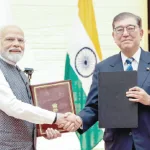In the complex tapestry of human interactions, one small but significant word often eludes our grasp: “No.” The ability to utter this two-letter word, with grace and conviction, is a testament to one’s confidence and sense of self. Yet, more often than not, we find ourselves entangled in a web of hesitation, fearing that saying “No” might hurt the feelings of others or disrupt the harmonious equilibrium of our relationships.
Such hesitance is, undoubtedly, well-intentioned. We’ve been raised to be polite, considerate, and accommodating. From childhood, we’re taught that saying “No” can be seen as impolite, selfish, or unkind. However, there comes a time when this well-intentioned inclination to please others can lead to unintended consequences, eroding our inner peace and creating a host of problems in our lives.
Imagine a scenario where you’ve consistently played the role of the “goodie goodie” – always ready to say “yes” to requests and hesitant to express your own desires or boundaries. On the surface, this might seem like an amiable approach, one that fosters harmony and goodwill. However, beneath this facade of agreeability, a silent storm brews. You’ve suppressed your inner voice for so long that when you do need to say “No,” it feels like an alien concept, a departure from the persona you’ve carefully crafted.
This is where the great miscalculation lies. The belief that saying “No” will inevitably hurt others is a flawed assumption. In reality, it can be a path to authenticity and healthier relationships. When we consistently suppress our true feelings and desires to avoid disappointing others, we inadvertently create a breeding ground for resentment, stress, and inner turmoil. This unchecked internal conflict can manifest in various ways – from sleepless nights to heightened anxiety – and gradually erode our well-being.
Moreover, the inability to say “No” can result in us being caught in situations that are not aligned with our values, preferences, or priorities. We might find ourselves burdened with tasks, commitments, or responsibilities that we never truly wanted to undertake. This not only saps our energy but also robs us of the time and resources that could be invested in pursuits that genuinely matter to us.
Now, let’s fast forward to the later stages of life. As we age, the dynamics of our relationships evolve, especially with our family and children. At this juncture, the consequences of a lifetime of “yeses” without conviction can become painfully apparent. There’s a poignant juncture where our family and, perhaps, even our children may start to expect us to conform to their wishes and preferences. This can manifest in various ways, from the trivial to the profound.
Consider a simple scenario: you’re engrossed in watching a particular TV program, something that brings you joy and relaxation. However, your children, for their own reasons, dislike the show and advise you to switch it off. In a world where you’ve been conditioned to always accommodate, you might find yourself torn. Should you prioritize your own enjoyment, or should you surrender to their wishes to avoid conflict?
This dilemma isn’t just about television preferences; it’s a reflection of a deeper issue – the loss of confidence in oneself and one’s choices. Over the years, you’ve become accustomed to aligning your life with the preferences of others, often at the cost of your own happiness. Consequently, when faced with such situations, you may struggle to assert your own desires, question the validity of your choices, and, in some instances, feel hurt by the thought of making someone unhappy.
This is a critical juncture where the art of saying “No” with confidence becomes paramount. It’s not about being obstinate or confrontational; it’s about reclaiming your autonomy, preserving your sense of self, and ensuring that your choices are driven by your own values and desires, not just the expectations of others.
In this context, saying “No” is not an act of defiance; it’s an act of self-affirmation. It’s an assertion of your individuality and a declaration that your happiness and well-being matter just as much as anyone else’s. By doing so, you create a space where open and honest conversations can occur. You invite others to understand your perspective, and in turn, you become more receptive to theirs.
Of course, it’s important to acknowledge that saying “No” can indeed be challenging, especially when it involves loved ones. It requires finesse, empathy, and a commitment to maintaining a healthy balance between asserting your needs and respecting theirs. It’s about fostering a dialogue that promotes mutual understanding rather than conflict.
In the example of the TV program, instead of simply switching off the TV or feeling hurt, you could engage in a conversation with your children. You might express your enjoyment of the show and inquire about their reasons for disliking it. This opens the door to a meaningful discussion where both parties can express their feelings and preferences without judgment.
In essence, the art of saying “No” with confidence is not about shutting doors; it’s about opening windows to better communication and healthier relationships. It’s about acknowledging that your needs and boundaries are valid and deserving of respect. It’s about recognizing that, by being true to yourself, you become a more authentic and genuine presence in the lives of those around you.
In the pursuit of saying “No” with confidence, it’s essential to recognize that this skill extends beyond interpersonal relationships. It also pertains to professional life. In the workplace, the ability to assert boundaries and decline tasks that overwhelm you or don’t align with your role can significantly impact your career satisfaction and mental well-being.
Consider a scenario where your manager consistently piles on more tasks than you can reasonably handle. Initially, you might say “Yes” to these additional responsibilities to show your dedication. However, over time, this can lead to burnout and decreased job satisfaction. The fear of disappointing your boss or colleagues might keep you from voicing your concerns, but it’s crucial to understand that saying “No” when necessary can lead to a healthier work-life balance and better performance in the long run.
Moreover, the art of saying “No” can also be a tool for personal growth. It forces you to evaluate your priorities and goals. When you say “No” to certain commitments, you free up time and energy to invest in pursuits that truly matter to you. It’s a way of decluttering your life from activities that don’t contribute to your personal or professional development.
To master the art of saying “No,” it’s beneficial to practice assertiveness and effective communication. This includes using polite but firm language, offering alternatives when possible, and expressing gratitude for the opportunity even when declining it. These skills not only make the process smoother but also show respect for the person making the request.
In essence, embracing the power of “No” is not about becoming a naysayer or a recluse; it’s about regaining control over your life, fostering healthier relationships, and staying true to your values. It’s a skill that empowers you to navigate the complexities of human interactions, both personally and professionally, while preserving your inner peace and authenticity. So, the next time you find yourself at the crossroads of saying “Yes” or “No,” remember that saying “No” with confidence can be a transformative act of self-care and self-empowerment.
In conclusion, the ability to say “No” with confidence is not a sign of selfishness; it’s a manifestation of self-respect and self-assurance. It’s a lifeline to maintaining inner peace and preventing the buildup of unwanted pressures and tensions. As we journey through life, our relationships evolve, but our core sense of self should remain steadfast. By embracing the power of “No” with grace and conviction, we pave the way for a life that is authentically our own, where our choices align with our values, and our inner peace remains unshaken by external expectations.
(The author can be reached at: [email protected])





